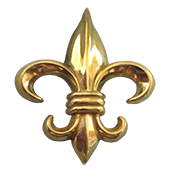Russian Icons: History Of Russian Icon Art Characteristics
- Posted on 7th March 2021
- in antique and modern art, antique appraisal, Antique Art, antique dealer, antique dealers and buyers, Russian icons
- by Alan
Icons, a characteristic and symbolic part of Russian culture, have their roots back in the year 988 AD. It was the year that Kievan Rus’ converted to Christianity. For more that 1,000 years, the Greek division of Christian faith, Orthodox Christianity, educated and formed both cultural and spiritual basis of the Russian society. This led the inspiration of artists and craftsman. Worship of icons, as well as their painting both imported into Russia at that time, originates from the Greek Orthodox tradition.
Russian icons are typically paintings on wooden boards, which have a religious subject. Their name ‘icon’ comes from the Greek word “ikona” that means ‘image’ or ‘likeness’.
![]()
Russian Icon Art Characteristics
For the painting of most Russian icons egg tempera is used on wooden panels that are specially prepared. It is also possible to find icons painted on cloth that is pasted onto these panels. Gold leaf is often used to create halos as well as the background areas. Some icons may instead of gold have silver leaf, which is occasionally dyed with shellac in order to imitate gold. Finally there are icons that do not have any gilding.
Silver bronze or tin exterior facades can also be found in some Russian icons.
Another characteristic of icon painting is varnishing over the image with drying oil. This is done either immediately after the paint dries, or later. Most hand-painted Russian icons have varnished surface.
Icon sizes vary in from very small (even miniatures) to the very large.
Iconography is a symbolic art; thus the figures were painted in a way that would emphasize their holiness more than their humanity. Certain rules of composition and color are observed, that are aiming to emphasize the religious message. Nearly everything within the icon is symbolic. The munificence of Heaven is symbolized by Gold; divine life by red, human life by blue and resurrection and transfiguration of Christ by white.
Techniques
The goal of icon painters was not simply create something stunning but also to convey a spiritual message. An icon was neither an explicit illustration of reality nor an abstract image of religious reality. Icon painting was formalized, following traditional techniques, subjects, symbols and presentations.
Collecting Russian Icons
Russian Icons of the 16th century or earlier are rare and their prices in the auctions rising at every sale. The Russian Icons from the 17th and 18th centuries are undervalued at the moment and would be a meaningful investment. The1900’s Palekh, Mstera and Monastic school Icons and Icons with highly decorative silver, enamel rizas with Imperial origin are very popular among collectors. The miniatures Icons with decorative rizas are also very interesting for collectors.
Many late 19th- and early 20th-century icons have been falsely aged in the 90’s, in order to imitate older icons. Frequently this is done by expert Russian icon painters, who can to not only paint astonishing works of art, but they also are able to “age” the icon. Although the result may be a fine work of art, it is still a work of deception.
